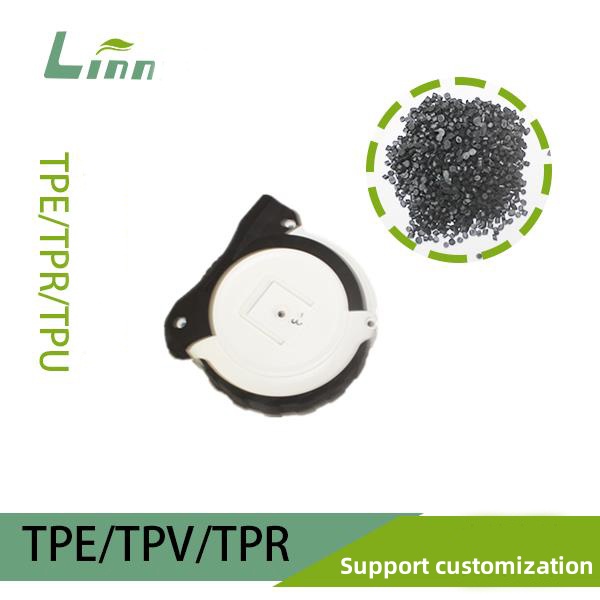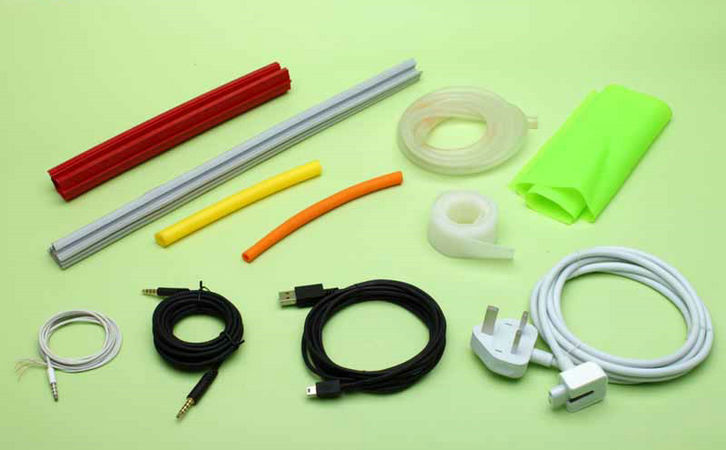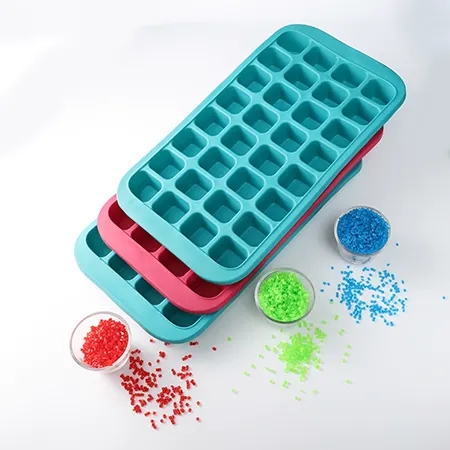As someone who’s spent over a decade tinkering with thermoplastic elastomers (TPR) in industries ranging from footwear to medical devices, I’ve come to appreciate the incredible versatility of TPR soft rubber. When someone asks, “What are the different types of TPR soft rubber models?” they’re usually trying to figure out which TPR variant suits their specific application—be it for a soft, grippy toy, a flexible shoe sole, or a durable seal. The question often arises from a need to navigate the dizzying array of TPR options, each with unique properties tailored to different uses. In this article, I’ll walk you through the main types of TPR soft rubber models, explain their characteristics, and share practical insights from my experience to help you choose the right one. Let’s dive in with a clear, hands-on perspective to demystify TPR and make your decision-making process smoother.
Understanding TPR Soft Rubber
TPR, or thermoplastic rubber, is a class of materials that blends the elasticity of rubber with the processability of plastics. “Soft rubber” refers to TPR formulations designed for flexibility, with Shore A hardness typically ranging from 10 to 80, making them ideal for applications requiring a soft, pliable texture. Unlike traditional vulcanized rubber, TPR can be molded and recycled, offering cost and manufacturing advantages. The “models” of TPR soft rubber refer to the different formulations or grades, which vary based on their base polymer, additives, and intended applications.

Main Types of TPR Soft Rubber Models
TPR soft rubber models are categorized based on their base polymer, hardness, processing method, and application-specific properties. Below, I’ll break down the primary types, drawing on my experience working with manufacturers to highlight their uses and nuances.
1. SBS-Based TPR
Styrene-Butadiene-Styrene (SBS)-based TPR is one of the most common and cost-effective types of soft rubber. It’s widely used in applications where flexibility and affordability are key.
Characteristics: SBS-based TPR offers good elasticity and low cost but has moderate heat and UV resistance. Its hardness typically ranges from 30 to 70 Shore A.
Applications: Commonly used for shoe soles, toys, and grips. I once worked with a sneaker manufacturer who relied on SBS-based TPR for budget-friendly soles, achieving a soft, comfortable feel at 50 Shore A.
Pros: Affordable, easy to process, widely available.
Cons: Limited durability in outdoor or high-temperature environments due to lower resistance to UV and heat.
Practical Insight: In a project for a toy company, we used SBS-based TPR for flexible figurines. The material’s low cost allowed us to keep production expenses down, but we had to add UV stabilizers for outdoor-displayed products to prevent degradation.
2. SEBS-Based TPR
Styrene-Ethylene-Butylene-Styrene (SEBS)-based TPR is a step up from SBS, offering enhanced durability and environmental resistance. It’s my go-to choice for applications requiring long-term performance.
Characteristics: SEBS-based TPR provides superior weatherability, UV resistance, and heat stability, with hardness ranging from 10 to 80 Shore A. It’s softer and more flexible than SBS at similar hardness levels.
Applications: Ideal for outdoor seals, medical tubing, sports equipment, and soft-touch grips. I helped an automotive client switch to SEBS-based TPR for door seals, improving durability under extreme weather conditions.
Pros: Excellent aging resistance, soft feel, recyclable.
Cons: Higher cost than SBS, requires careful formulation to avoid stickiness.
Practical Insight: For a medical device project, we used a 20 Shore A SEBS-based TPR for flexible tubing. The material’s biocompatibility and softness were critical, but we had to fine-tune the plasticizer ratio to prevent oil seepage.

3. TPU-Based TPR
Thermoplastic Polyurethane (TPU)-based TPR is a premium option, known for its toughness and abrasion resistance. It’s less common in soft rubber applications but shines in high-performance scenarios.
Characteristics: Offers high abrasion resistance, excellent tear strength, and good elasticity, with hardness typically between 50 and 80 Shore A.
Applications: Used in premium shoe soles, industrial belts, and wearable device straps. I once collaborated with a sports brand to develop TPU-based TPR soles for running shoes, achieving superior durability.
Pros: Outstanding mechanical properties, good chemical resistance.
Cons: Expensive, requires specialized processing equipment.
Practical Insight: In a project for a fitness tracker strap, TPU-based TPR provided the perfect balance of softness (60 Shore A) and durability, but we had to invest in high-precision molds to handle its higher viscosity.
4. TPE-O (Olefinic TPR)
Olefinic Thermoplastic Elastomers (TPE-O), based on polypropylene or polyethylene blends, are another category of TPR soft rubber, valued for their chemical resistance and low cost.
Characteristics: Good chemical resistance and low density, with hardness ranging from 30 to 70 Shore A. They’re less elastic than SBS or SEBS but offer a unique balance of stiffness and flexibility.
Applications: Common in household goods, packaging, and low-cost seals. I used TPE-O for a kitchen mat project, where chemical resistance to cleaning agents was a priority.
Pros: Cost-effective, lightweight, resistant to chemicals.
Cons: Lower elasticity and limited high-temperature performance.
Practical Insight: For a budget-conscious client producing disposable packaging, TPE-O was ideal due to its low cost and recyclability, but we avoided it for high-flex applications due to its limited elasticity.

5. Specialty TPR Models
Beyond the standard types, there are specialty TPR models tailored for niche applications. These are often customized formulations with specific additives or blends.
Flame-Retardant TPR: Used in electrical components or cable sheathing, these models include flame-retardant additives to meet safety standards like UL94 V-0.
Food-Grade TPR: Designed for kitchenware or baby products, these comply with regulations like FDA or EU food contact standards. I worked on a baby bottle nipple project using food-grade SEBS-based TPR, ensuring safety and softness.
High-Transparency TPR: Used for clear seals or aesthetic components, these models prioritize optical clarity. They often use SEBS with low-haze plasticizers.
Bio-Based TPR: Emerging models made from renewable resources, used in sustainable products. These are less common but gaining traction in eco-conscious markets.
Practical Insight: For a client producing flame-retardant cable coatings, we used a specialty SEBS-based TPR with halogen-free additives. The challenge was balancing flame resistance with flexibility, which required extensive testing.
Summary Table of TPR Soft Rubber Models
|
TPR Model |
Base Polymer |
Key Properties |
Typical Applications |
|---|---|---|---|
|
SBS-Based TPR |
SBS |
Cost-effective, good elasticity |
Shoe soles, toys, grips |
|
SEBS-Based TPR |
SEBS |
UV/heat resistance, soft feel |
Seals, medical tubing, grips |
|
TPU-Based TPR |
TPU |
High abrasion resistance, tough |
Premium soles, wearable straps |
|
TPE-O |
PP/PE Blends |
Chemical resistance, low cost |
Household goods, packaging |
|
Specialty TPR |
SEBS/TPU Blends |
Flame-retardant, food-grade, etc. |
Electrical, food contact, clear |
How to Choose the Right TPR Model
Choosing the right TPR soft rubber model depends on your product’s requirements. Here’s how I approach it based on years of trial and error:
Define Application Needs: Determine the key properties—e.g., softness for grips (low Shore A), durability for outdoor use (SEBS), or abrasion resistance for soles (TPU).
Consider Environmental Factors: For outdoor products, prioritize SEBS for UV resistance. For indoor budget items, SBS or TPE-O may suffice.
Balance Cost and Performance: SBS is great for cost-sensitive projects, while TPU or specialty models are better for high-end applications.
Test Formulations: Always conduct small-scale trials to verify performance. I once saved a client from a costly mistake by testing a TPE-O formula that turned out too brittle for their application.
Check Processing Compatibility: Ensure the TPR model suits your equipment. TPU, for example, requires higher processing temperatures (around 200-220°C) than SBS (150-180°C).

Real-World Examples from My Experience
Let me share a couple of stories to illustrate how TPR model selection works in practice:
Shoe Sole Project: A footwear client needed soft, affordable soles for casual shoes. We chose an SBS-based TPR with a 60 Shore A hardness, using a 1:1.5 SBS-to-paraffinic oil ratio. The result was a cost-effective, comfortable sole, but we added a small amount of antioxidant to improve shelf life.
Medical Tubing Challenge: For a medical device manufacturer, we selected a 20 Shore A SEBS-based TPR for flexible, biocompatible tubing. The challenge was ensuring clarity and softness without oil seepage. After testing multiple plasticizers, we settled on a high-purity paraffinic oil and added a compatibilizer to stabilize the formulation.
Flame-Retardant Cable Coating: An electronics client needed a flame-retardant TPR for cable sheathing. We used a specialty SEBS-based TPR with halogen-free additives, achieving UL94 V-0 compliance while maintaining flexibility at 50 Shore A.
These projects taught me that no single TPR model fits all scenarios—success lies in matching the material to the application and fine-tuning the formulation.
Technical Considerations for TPR Models
To get the most out of TPR soft rubber, consider these technical factors:
Hardness Range: Most TPR soft rubbers fall between 10-80 Shore A. Lower hardness (10-30) suits soft grips, while higher hardness (50-80) is better for soles or structural parts.
Processing Conditions: SBS and TPE-O process at 150-180°C, SEBS at 170-200°C, and TPU at 200-220°C. Incorrect temperatures can cause degradation or poor flow.
Additive Interactions: Additives like UV stabilizers or flame retardants can affect clarity or softness. Always test for unintended effects.
Regulatory Compliance: For food-grade or medical applications, ensure materials meet standards like FDA 21 CFR 177.2600 or EU 10/2011.
For deeper technical insights, I recommend exploring resources from industry leaders like Kraton for SBS/SEBS data or BASF for TPU specifications. Their technical data sheets are goldmines for formulation details.

Avoiding Common Pitfalls
From my experience, here are some pitfalls to watch out for when selecting TPR models:
Overloading with Fillers: Adding too much calcium carbonate (e.g., >40%) to cut costs can reduce elasticity and cause surface defects.
Ignoring Compatibility: Mismatched plasticizers and polymers (e.g., aromatic oils with SEBS) can lead to oil seepage or phase separation.
Skipping Pilot Tests: Always run small-scale trials before full production. I once saw a client lose thousands due to untested TPE-O that cracked under stress.
Neglecting Environmental Factors: For outdoor products, don’t skimp on UV stabilizers, or you’ll face premature aging, as I learned in a garden hose project.
Final Thoughts
Navigating the world of TPR soft rubber models can feel overwhelming, but it’s all about understanding the strengths and limitations of each type—SBS, SEBS, TPU, TPE-O, and specialty variants. By aligning the material with your product’s needs, testing thoroughly, and optimizing processing, you can unlock TPR’s full potential. My years in the industry have shown me that the right TPR model can transform a product, whether it’s a soft toy that delights kids or a durable seal that withstands harsh conditions. If you’re grappling with TPR selection or formulation challenges, I’m here to help—drop a question, and let’s work through it together!
Frequently Asked Questions
Q1: How do I know which TPR model is best for my product?
A: Start by defining your product’s needs—hardness, durability, cost, or environmental resistance. For budget-friendly indoor items, use SBS-based TPR. For outdoor or high-performance applications, choose SEBS or TPU. Always test small batches to confirm performance.
Q2: Can I mix different TPR models in one formulation?
A: Yes, but it requires careful formulation. For example, blending SBS and SEBS can balance cost and durability, but you must test for compatibility and phase separation. Add compatibilizers if needed.
Q3: Why does my TPR product feel sticky?
A: Stickiness often results from excessive plasticizer or poor compatibility. Reduce the oil ratio (e.g., from 1:2 to 1:1.5) and ensure the plasticizer matches the base polymer. Adding a compatibilizer can also help.
Q4: Are specialty TPR models worth the higher cost?
A: For applications like food-grade or flame-retardant products, specialty TPRs are essential to meet regulatory or performance requirements. For general use, standard SBS or SEBS may suffice to keep costs down.





